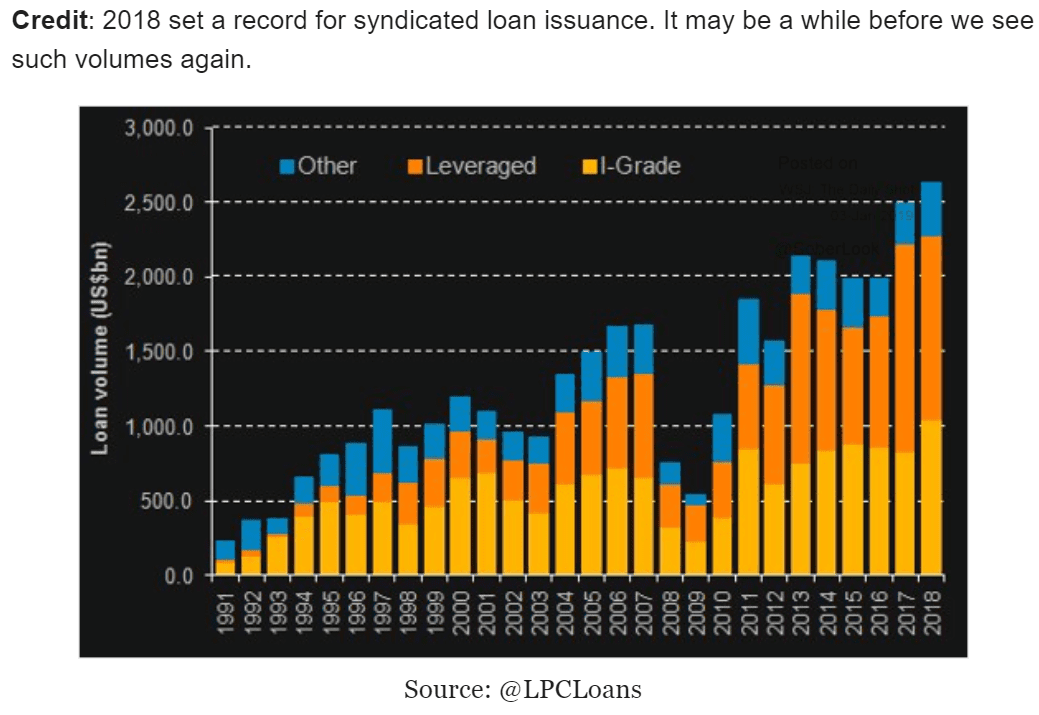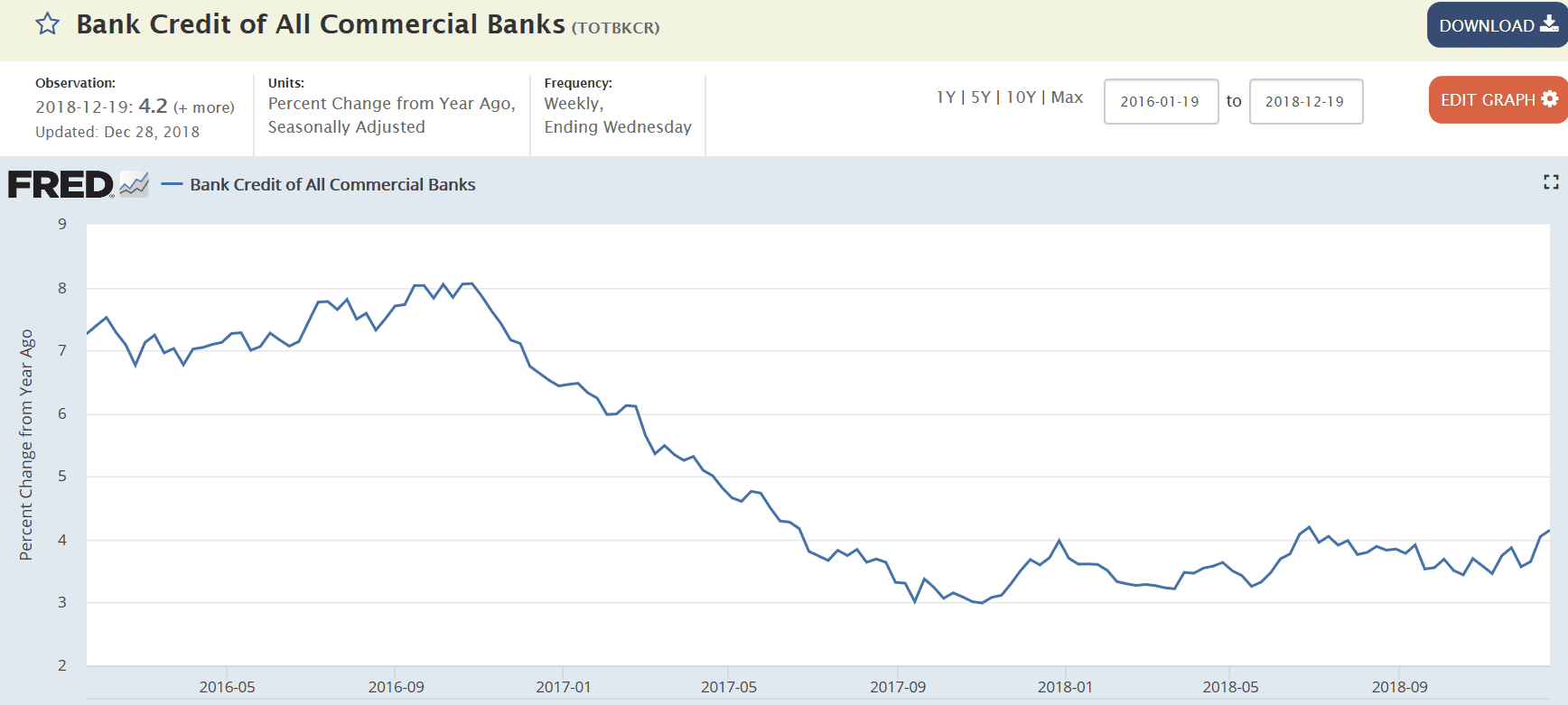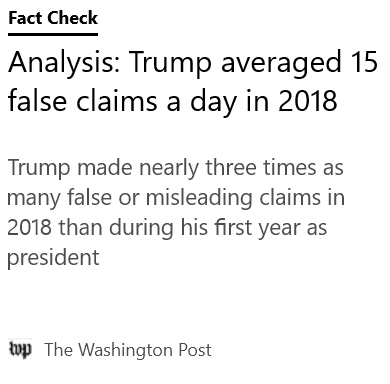Global retreat underway?

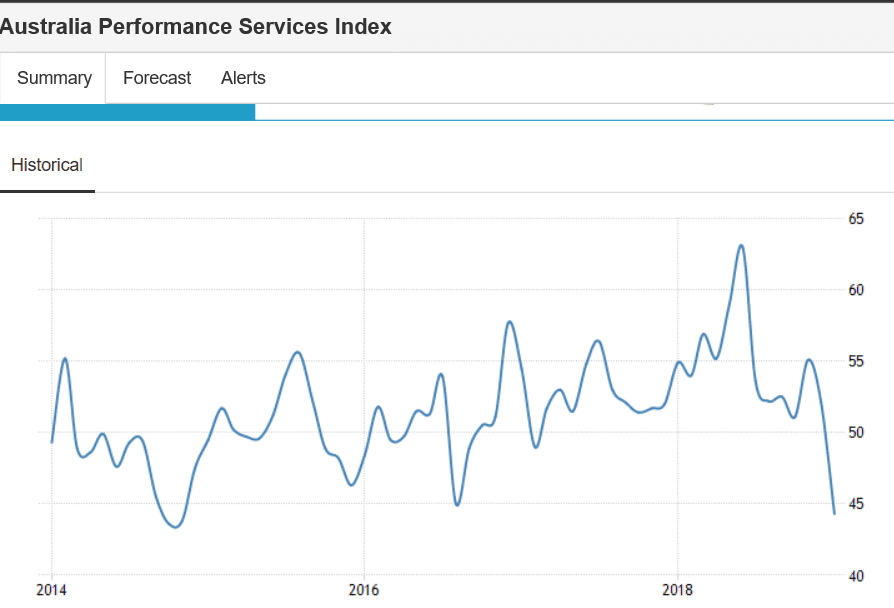
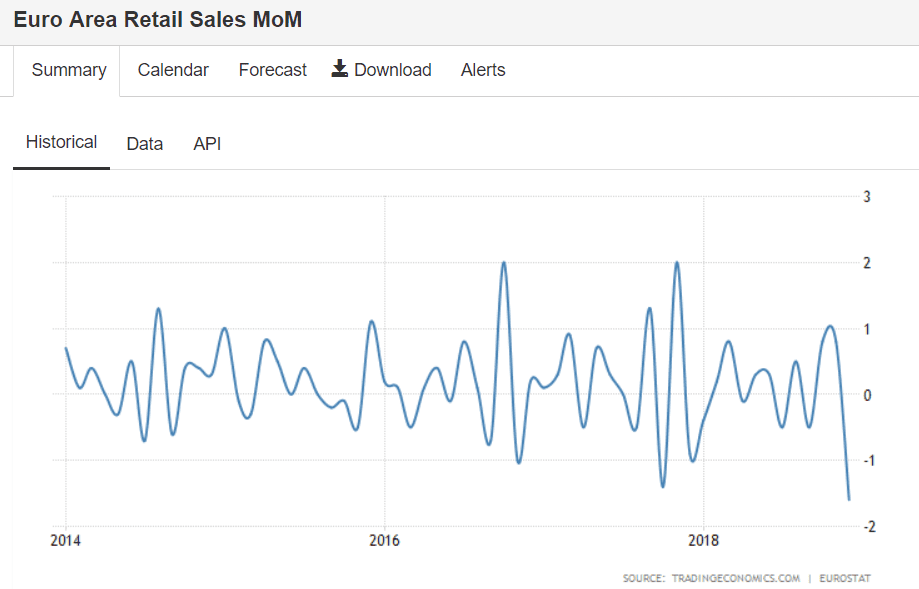
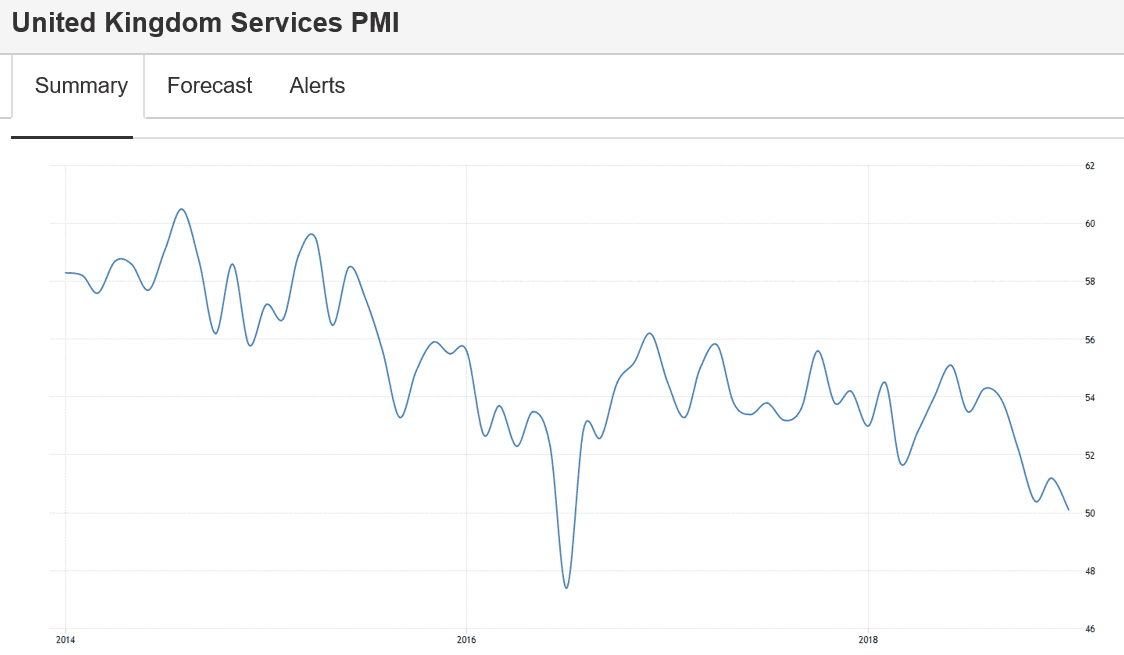
US ISM New York Index at 7-Month Low in January
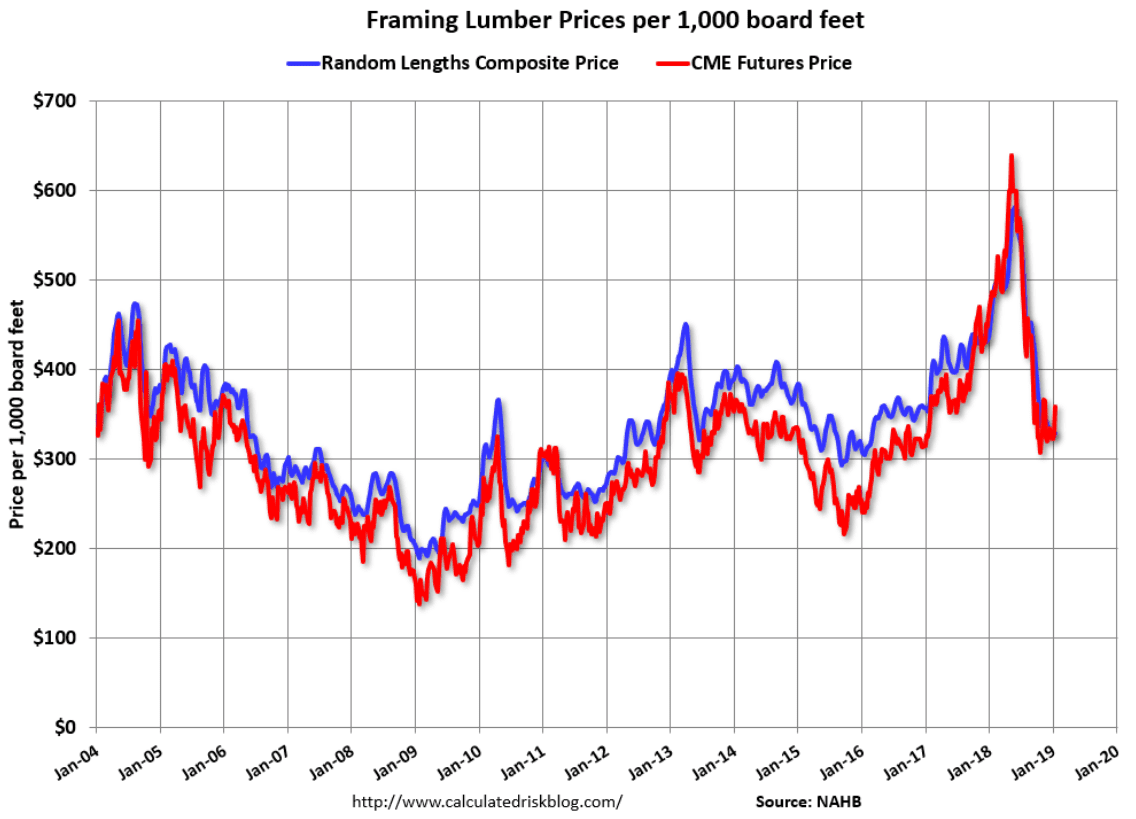

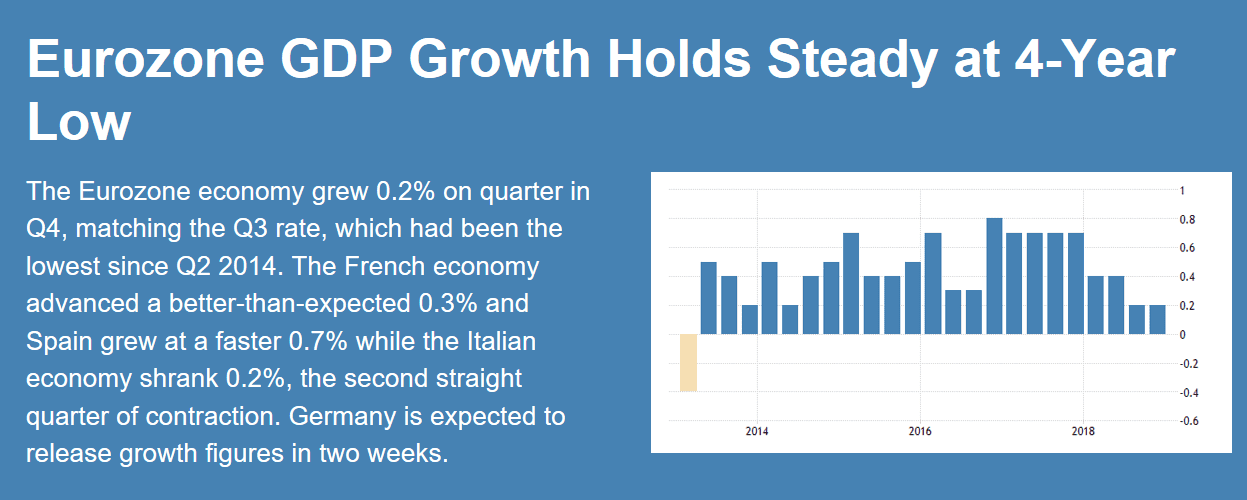

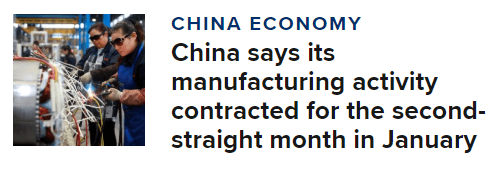
Lots of headlines pointing to corporate weakness:
Amazon sales outlook falls short after record holiday quarter
(Reuters) Fast and free shipping helped the world’s largest online retailer boost revenue by 20 percent. Net income jumped 63 percent to $3 billion for the fourth quarter. Its international operating loss shrunk to $642 million in the quarter from $919 million a year earlier. The company forecast net sales of between $56 billion and $60 billion for the first quarter. Overall, net sales for the fourth quarter were $72.38 billion and beat analysts’ average estimate of $71.87 billion on the back of a strong holiday season, which includes the major U.S. shopping event Black Friday.
Seems to be holding up as the rest of the global economy is fading fast. The revisions are interesting, best not to judge a number until it’s at least a month old:
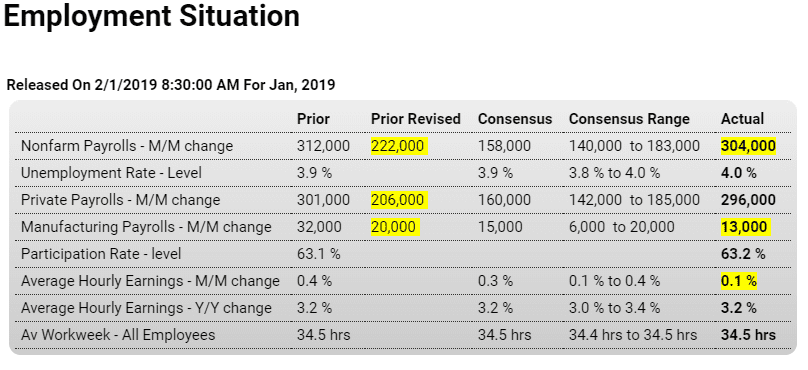
Seems to be nudging back up since the tax cuts, or maybe it all gets revised down next month to make it look more like the other indicators?
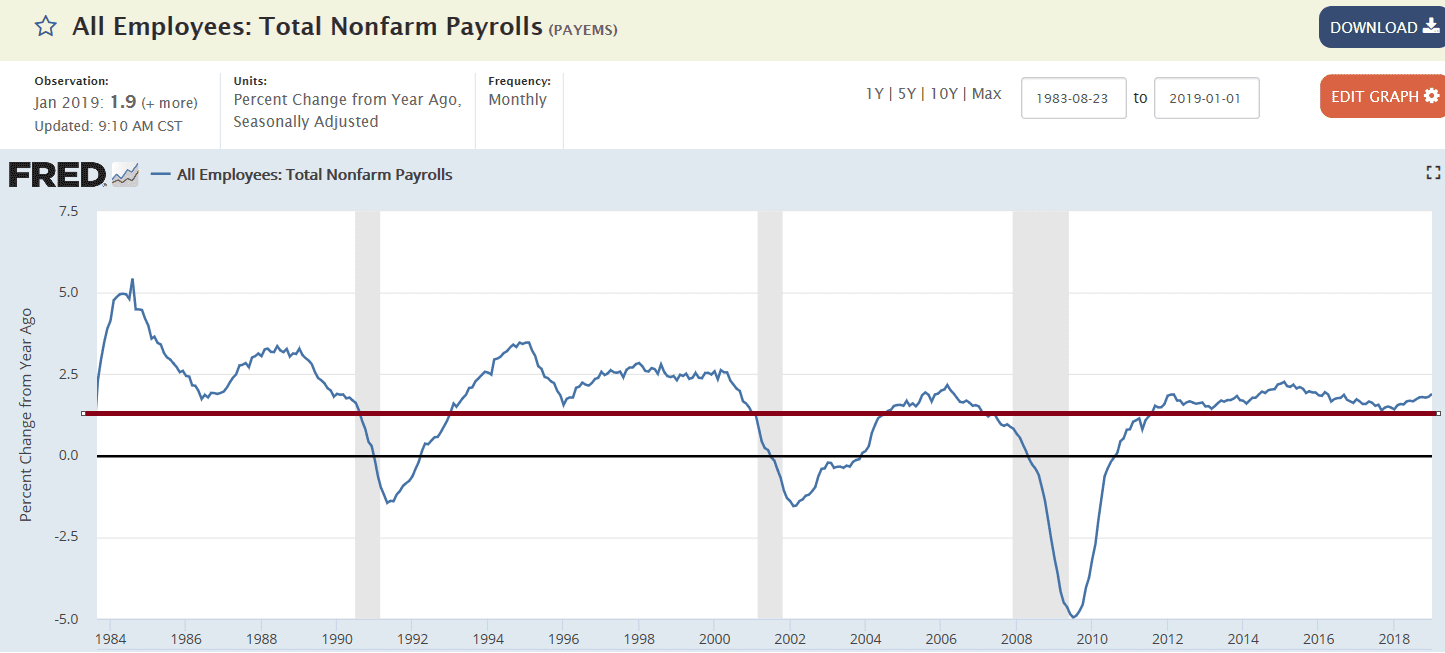
Private payrolls alone tell a somewhat different story:
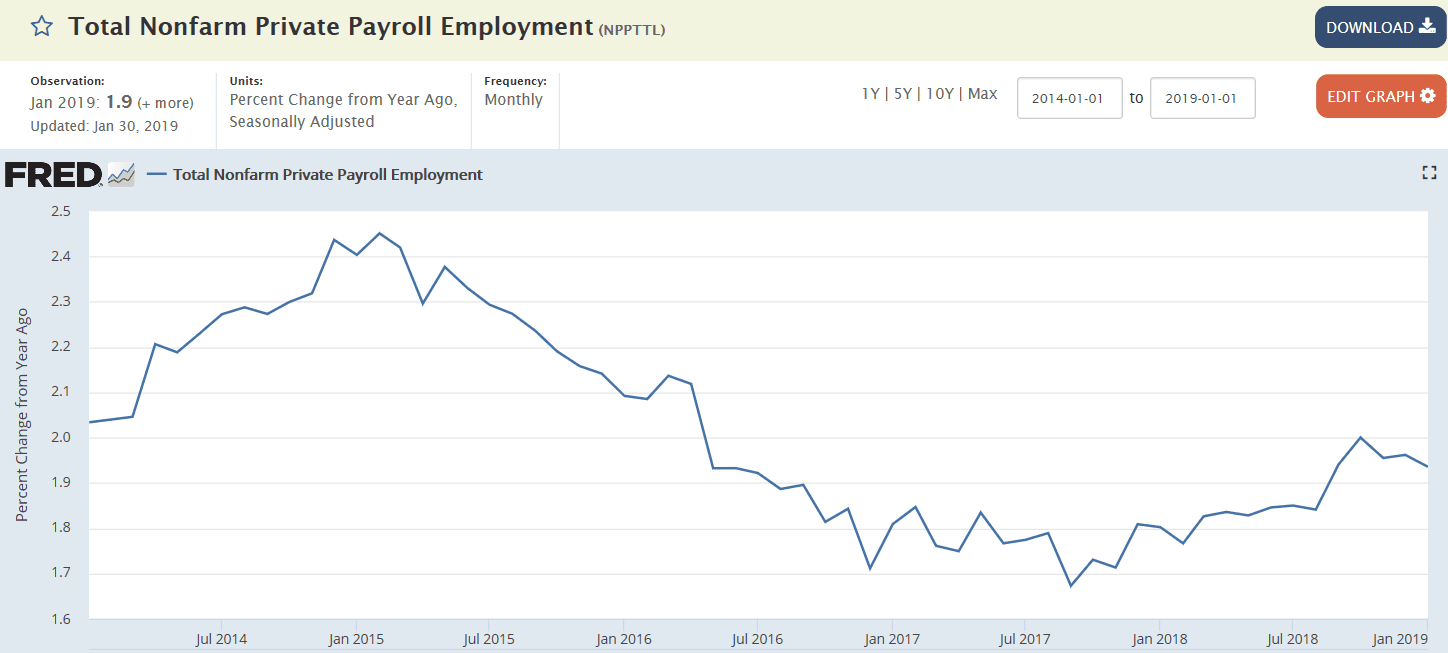
Apple says China sales fell 27% last quarter
(Nikkei) Apple’s net sales in greater China, including the mainland, Hong Kong and Taiwan, fell 27% on the year to $13.17 billion for the three months ended Dec. 29 in results announced Tuesday. This marked the first downturn there in six quarters. Combined sales elsewhere, including the U.S., Europe and Japan, grew 1% to $71.1 billion, pointing to China as the central cause of the sluggish quarterly results. Greater China as a share of Apple’s sales shrank to 16% from 20%. Total sales for the quarter dropped 5% to $84.3 billion.
3M Lowers Profit Outlook for 2019
(WSJ) “Some of the things that we were expecting on tariffs haven’t turned out quite as bad as what we were estimating,” Financial Chief Nick Gangestad said. 3M now expects $70 million in higher raw material costs this year, including the effect of tariffs, compared with $100 million previously. But 3M said it was seeing a slowdown in some important markets including China and weaker demand globally in industries such as car and electronics production. The company expects potentially lower revenue growth and earnings of $10.45 to $10.90 a share this year, compared with its prior goal of $10.60 to $11.05 a share.
U.S. auto sales seen down in January: J.D. Power, LMC
(Reuters) U.S. auto sales in January are expected to fall about 1 percent from the same month in 2018, partly due to uncertainty around government shutdown causing some customers to delay purchases, according to industry consultants J.D. Power and LMC Automotive. Total vehicle sales in January are estimated to be about 1,141,300 vehicles, the consultancies said on Tuesday. Retail sales are expected to fall 2.4 percent to 864,300 vehicles in January, while the overall total seasonally adjusted annualized rate for vehicles is expected to be about 16.8 million vehicles, down 2.3 percent from a year ago.
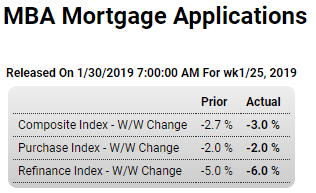
Highlights
Purchase applications for home mortgages fell a seasonally adjusted 2 percent in the January 25 week, continuing the prior week’s cooling from the highest volume since 2010 seen at the start of the year. Year-on-year, unadjusted purchase applications gave up a 13 percent gain recorded in the prior week and plunged back into negative territory to a level 7 percent lower than a year ago. Applications for refinancing fell 6 percent from the prior week, pulling down the refinance share of mortgage activity by 2.5 percentage points to 42.0 percent. The average interest rate for 30-year fixed rate conforming mortgages ($484,350 or less) rose 1 basis point from the prior week to 4.75 percent. Note that results for the week were affected by the Martin Luther King Jr. Holiday, for which adjustments were made but which may still have distorted some comparisons. Despite the cooling in the last 2 weeks, purchase applications remain about 6 percent above the long term average and could give a boost to the housing market in the upcoming spring buying and selling season.
Way below expectations:
NAR: Pending Home Sales Index Decreased 2.2% in December
Still high but softening rapidly:
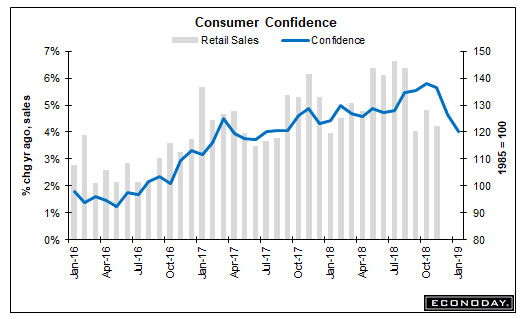
This forecast for Friday’s employment report is down from last month but still reasonably strong:

Highlights
ADP estimates that private payroll growth in Friday’s employment report for January will rise a higher-than-expected 213,000. Forecasters pegged ADP’s January estimate at 174,000 and see Friday’s private payrolls coming in at 160,000 vs 301,000 in December.
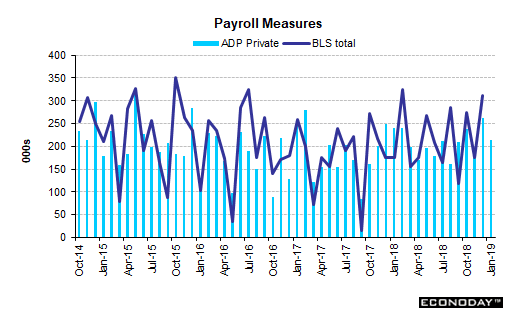
These seem to be popping up everywhere, with none of them getting it right… ;)
The Flamboyant Absurdity of ‘Modern Monetary Theory’
Modern Monetary Theory: A Cargo Cult
MMT Or Bust – A Big Government Fantasy For Leftists
Imports up, exports down:

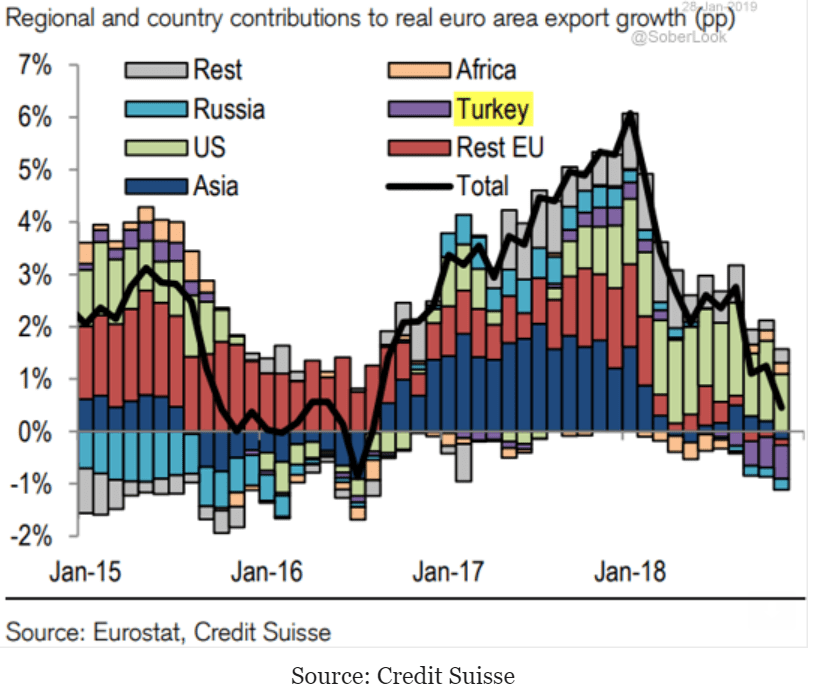
China’s December industrial profits fall for 2nd straight month
(Reuters) Profits notched up by China’s industrial firms declined 1.9 percent from a year earlier to 680.8 billion yuan ($100.9 billion) in December. For the full-year of 2018, industrial profits increased 10.3 percent on an annual basis to 6.64 trillion yuan, versus the 11.8 percent gain in the January-November period, the National Bureau of Statistics (NBS) said on its website. Chinese industrial firms’ liabilities rose 5.2 percent from a year earlier to 64.1 trillion yuan by end-2018, compared with a 5.8 percent rise as of end-November.
Slowdown bites China’s auto industry as inventories pile up
(Nikkei) Auto sales including passenger and commercial vehicles fell 2.8% to 28 million units last year as Beijing phased out tax cuts on smaller cars and the Sino-American trade war helped dampen economic growth. Bernstein, which reckons first-time auto insurance give the most accurate view of actual retail sales, expects industry sales to decline 4% this year following what it calculated as a 7.1% contraction in 2018. The industry started 2019 with channel inventory at record high levels, and vehicle prices and margins are likely to remain under pressure amid declining volumes, it added.
Agent Orange, AKA Tariff Man, taking down the global economy:

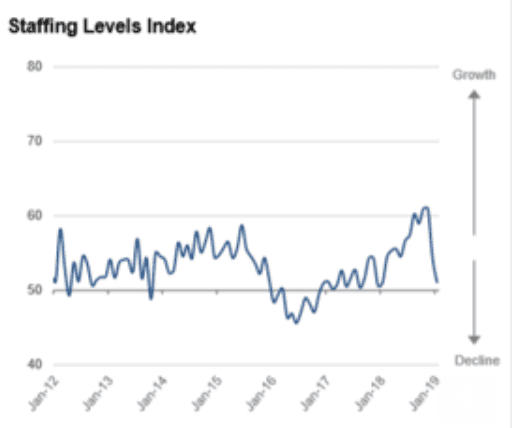
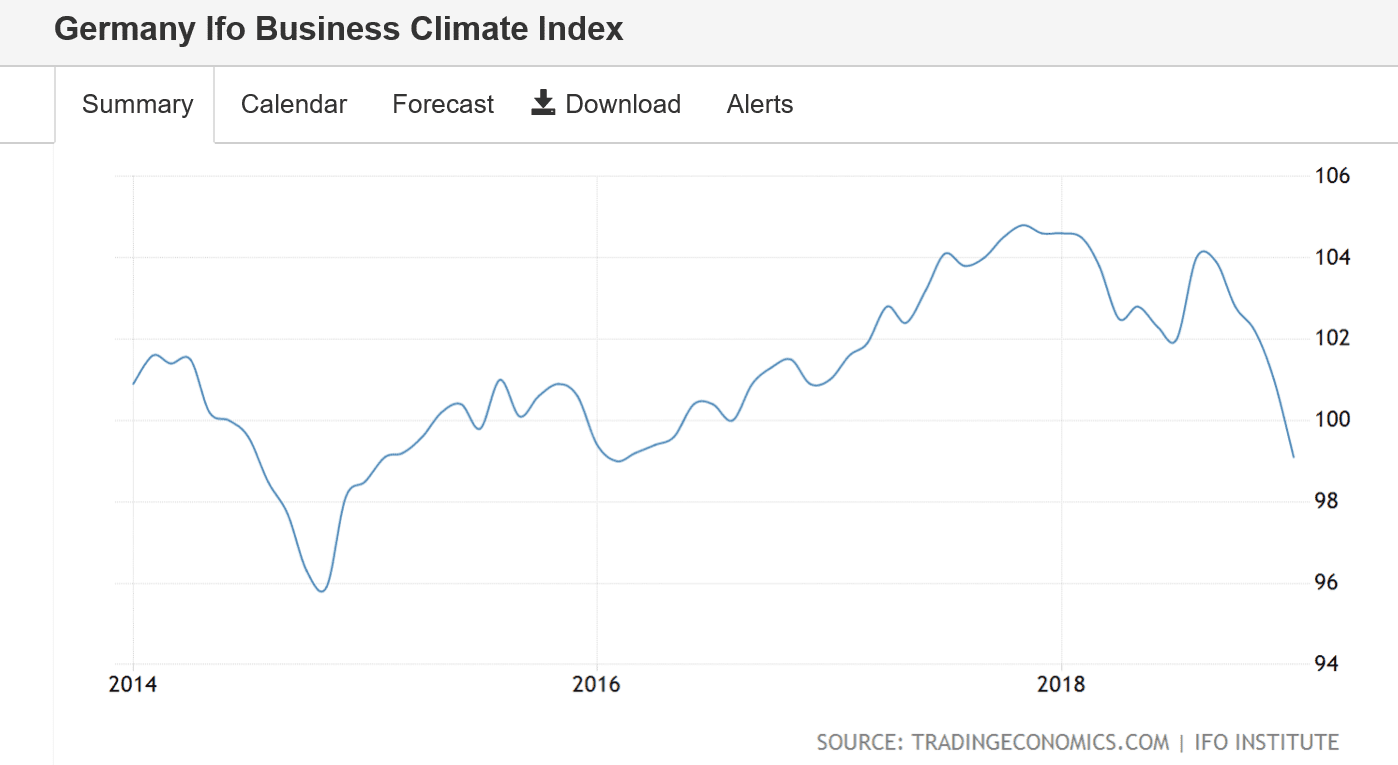

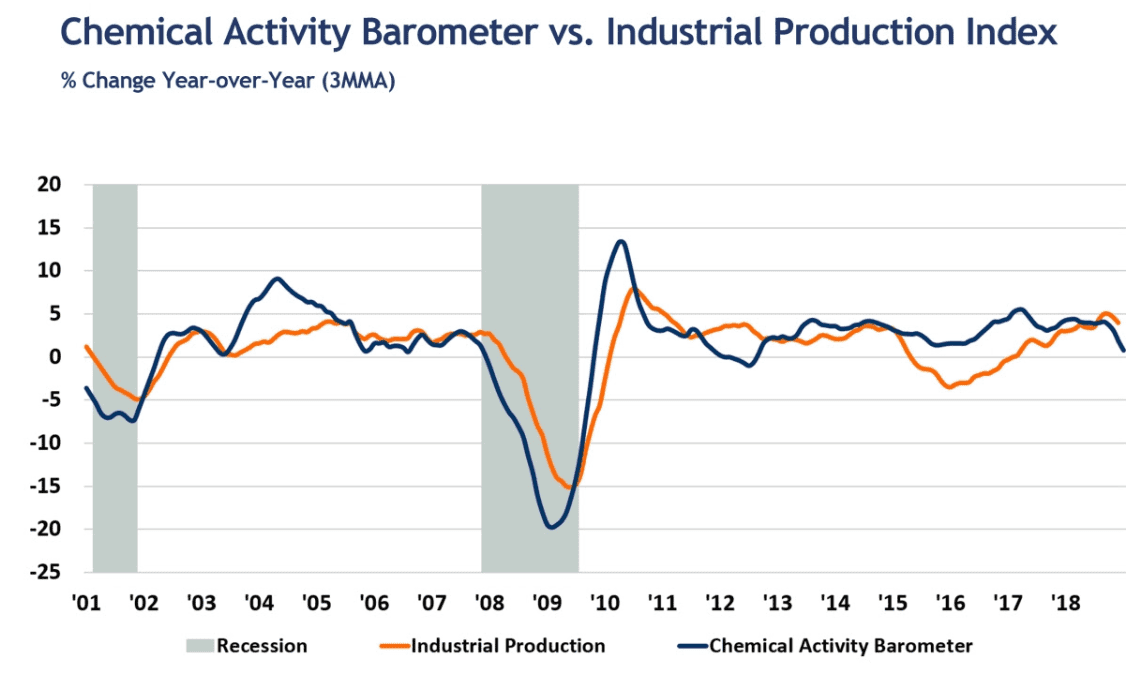
Intel Projects Slower Revenue Growth This Year
(WSJ) Intel Corp. reported a 9% gain in revenue. Customers’ robust appetite for server chips boosted data-center businesses by 45% through the first nine months of 2018, but now those buyers need to digest those purchases, finance chief and interim chief executive Bob Swan said. That slowdown will hit the next two quarters as well, he said. The company now expects total revenue growth of about 1% in the year ahead to $71.5 billion, a much more conservative pace than the nearly 13% growth in 2018. Mr. Swan told analysts Thursday that “our outlook is a little more cautious than it was a few months ago.”
Global shipping rates slump in latest sign of economic slowdown
(Reuters) The Baltic Dry Index, measure of ship transport costs for materials like iron ore and coal, has fallen by 47 percent since mid-2018. The Baltic index has lost a quarter of its value since the start of the year, and dry-bulk is not the only shipping market under pressure. The Harpex Shipping Index, which tracks container rates, has dropped by 30 percent since June 2018. As a measure of the demand for shipping manufactured goods from producers to consumers, container rates are also seen as a leading economic indicator.
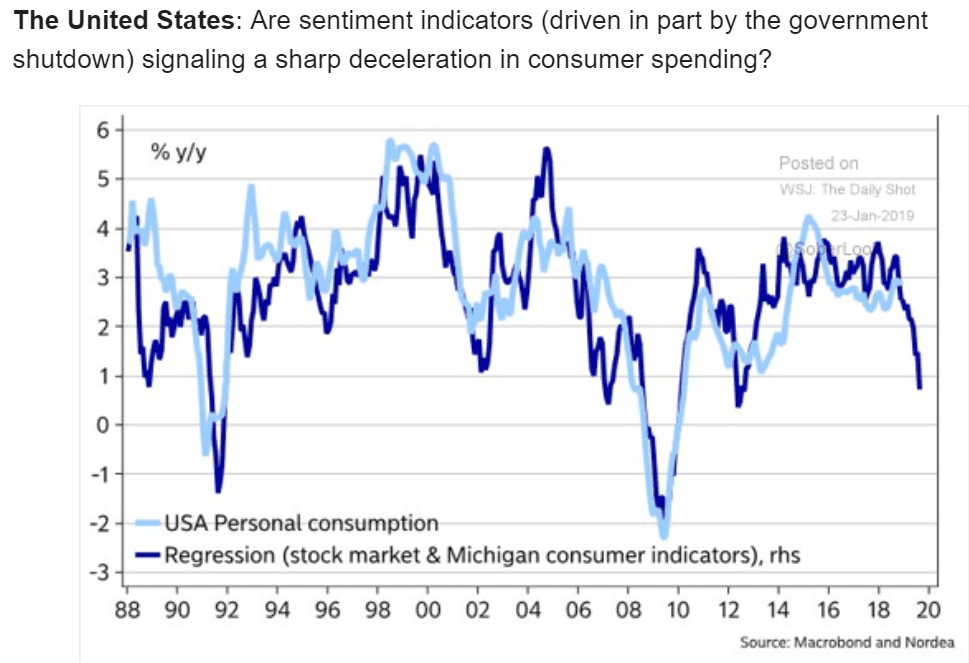
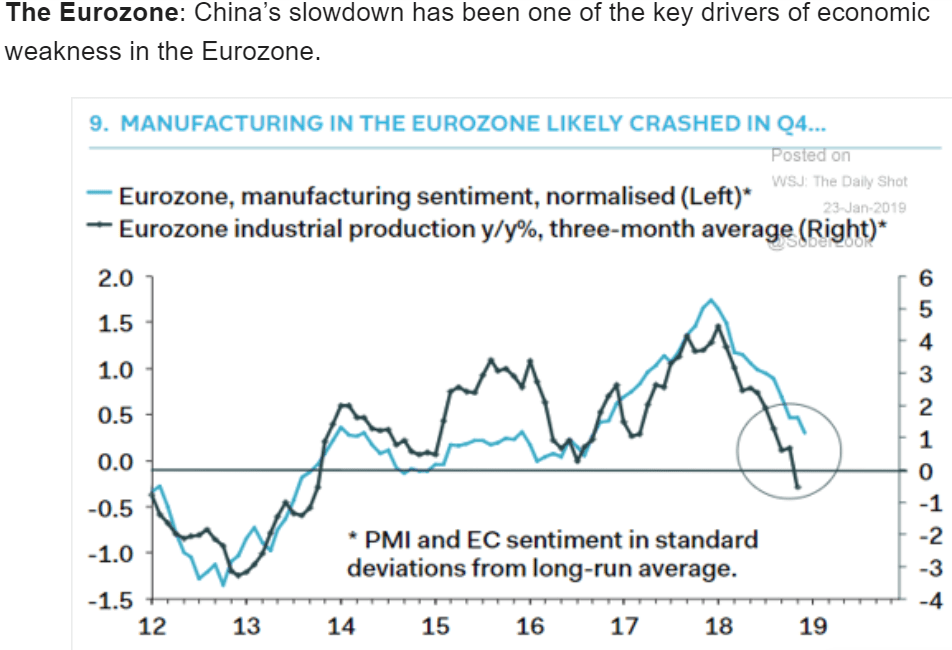
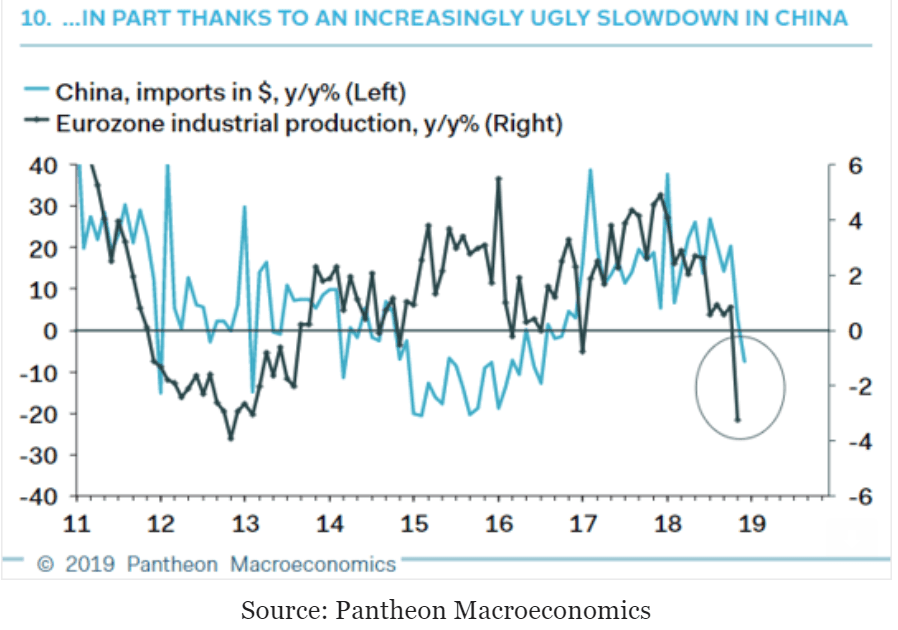
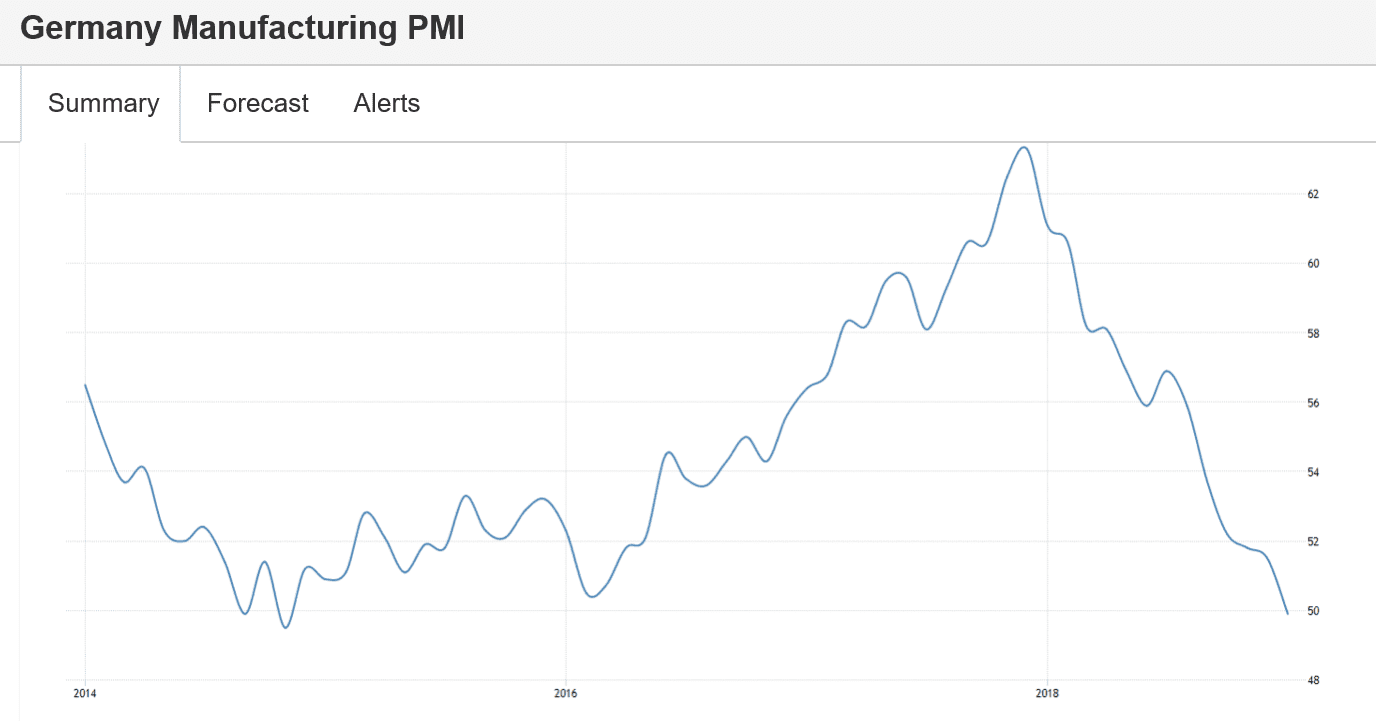
Euro area business growth close to stalling at 5½ year low in January
(Markit) Flash Eurozone PMI Composite Output Index at 50.7 (51.1 in December). Services PMI Activity Index at 50.8 (51.2 in December). Manufacturing PMI Output Index at 50.4 (51.0 in December). Manufacturing PMI at 50.5 (51.4 in December). The factory sector reported the weakest expansion since the current production upturn began in July 2013, while the service sector expansion was the smallest since August 2013. New orders for goods fell for a fourth successive month, declining at a rate not seen since April 2013, while inflows of new business in the service sector slipped into decline for the first time since July 2013.
Trump adviser warns of zero growth if shutdown lingers this quarter
(The Hill) Kevin Hassett, chairman of the White House Council of Economic Advisers, said Wednesday that the partial government shutdown could wipe out an entire quarter of gross domestic product (GDP) growth if it lasts until the end of March. “It is true that if we get a typically weak first quarter and then have an extended shutdown that we could end up with a number that’s very, very low,” Hassett said. When asked if the U.S. could see no growth at all in the first quarter, Hassett said, “Yes, we could,” if the shutdown lasted until the end of March.
Truckers See Momentum Slowing Heading Into 2019
(WSJ) J.B. Hunt Transport Services on Thursday reported $2.32 billion in revenue for the fourth quarter, a 16% year-over-year increase. An index of U.S. domestic freight volumes slipped 0.8% last month compared with December 2017, the first annual decline in two years, according toCass Information Systems Inc., which processes freight bills. The average price to hire the most common type of big rig dipped to $2.07 per mile, a penny lower than the prior month and 5 cents below the level in December 2017, according to online freight marketplace DAT Solutions LLC.
Bad:

Highlights
Mortgage rates began to move down in December but it wasn’t soon enough to help the month’s resales. Existing home sales fell a sharper-than-expected 6.4 percent to a 4.990 million annualized rate that is the lowest in more than three years and barely makes Econoday’s consensus range.
Weakness across the board is a fair description of the results with single-family sales down 5.5 percent to a 4.450 million rate and condo sales down 12.9 percent to 540,000. The weakest region in the data is the Midwest at an 11.2 percent decline with the West showing the least weakness at minus 1.9 percent.
For buyers, the bad news includes less selection as supply on the market fell 10.9 percent to 1.550 million units for sales. Relative to sales, supply is at 3.7 months vs 3.9 months in the prior month.
For sellers, the bad news includes a 1.4 percent decline in the median price to $253,600. And relative to sales, prices appear rich as the year-on-year median shows a gain of 2.9 percent vs what is a 10.3 percent decline in year-on-year sales.
Mortgage rates peaked in November and are since down about 40 basis points for 30-year fixed mortgages to roughly 4.75 percent. This move is very likely to help sales in January which will also get a comparison lift from what turned out to be a very weak December. The housing sector may have ended a soft 2018 on a down note but the outlook for 2019 — as long as the labor market stays healthy and rates hold steady — may well be positive.
Global trade collapse in progress:
Japan’s trade falls into red for 1st time in 3 years
(Kyodo) Japan logged a goods trade deficit of 1.20 trillion yen ($11 billion) in 2018. Imports rose 9.7 percent from a year earlier to 82.69 trillion yen, outpacing a 4.1 percent increase in exports to 81.49 trillion yen. Crude oil imports surged 24.5 percent to 8.91 trillion yen last year. By region, Japan ran a deficit of 3.28 trillion yen against China. Against all of Asia, Japan saw a surplus of 5.54 trillion yen. Japan had a surplus of 6.45 trillion yen against the United States. With Europe, Japan logged a deficit of 487.5 billion yen. For December, Japan logged a goods trade deficit of 55.3 billion yen. Exports fell 3.8 percent while imports grew 1.9 percent.
China’s plans to dominate hi-tech sector with ‘Made in China 2025’ plan hit a stumbling block as US trade war takes its toll
(SCMP) Beijing’s push to dominate hi-tech industries in the next decade under the “Made in China 2025” plan has been hit by the US trade war with a number of advanced manufacturing sectors experiencing weakening demand. Production of industrial robots fell by 12.1 per cent in December from a year earlier after a drop of 7.0 per cent in November. Growth in the new-energy car sector slowed to 15.5 per cent in December from 24.6 per cent in November. Production of integrated circuits also fell by 2.1 per cent in December, although an improvement from November’s decline of 7 per cent.
0 rate policy for decades, massive quantitative easing, 10 year rate pegged at 0%- maybe central banks can’t create inflation???
Who would’ve thought… ;)
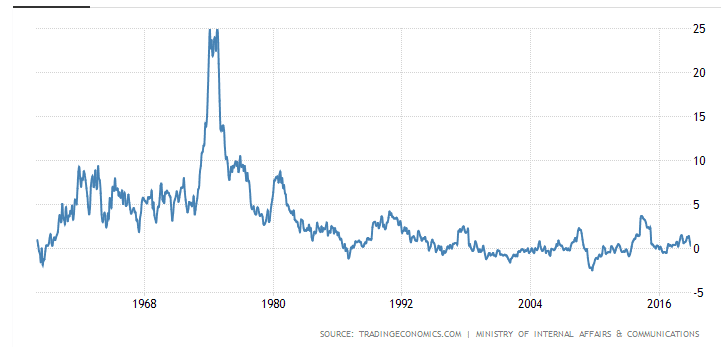
Trade issues taking their toll:
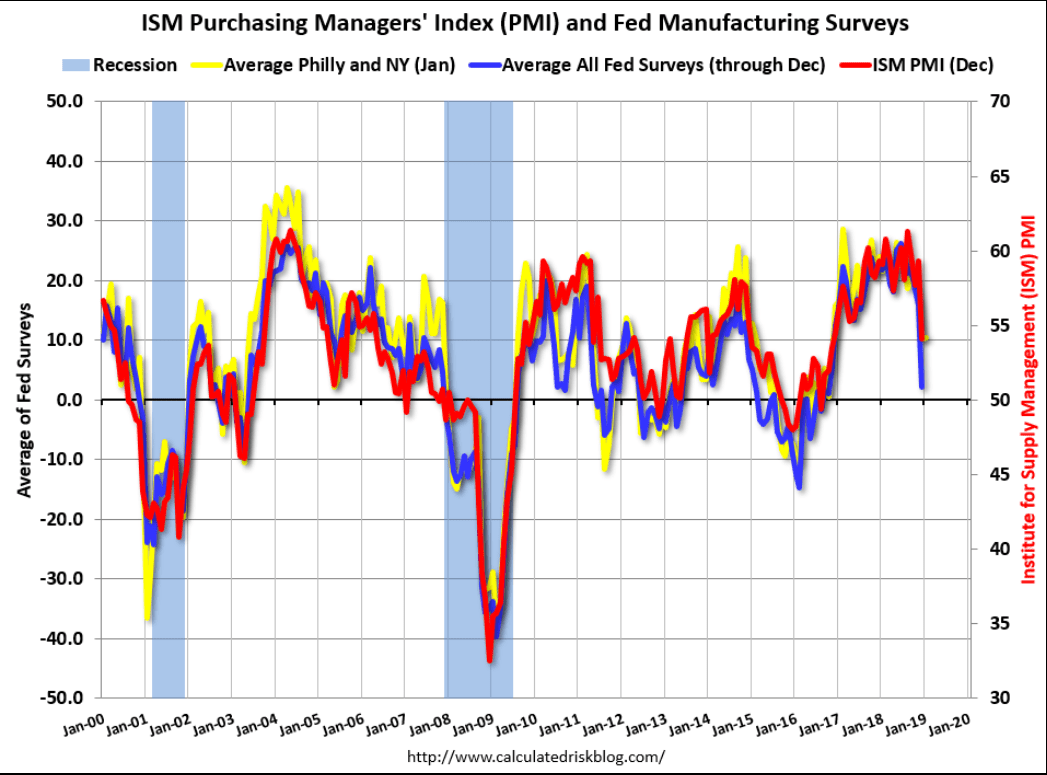
This too has gone flat:
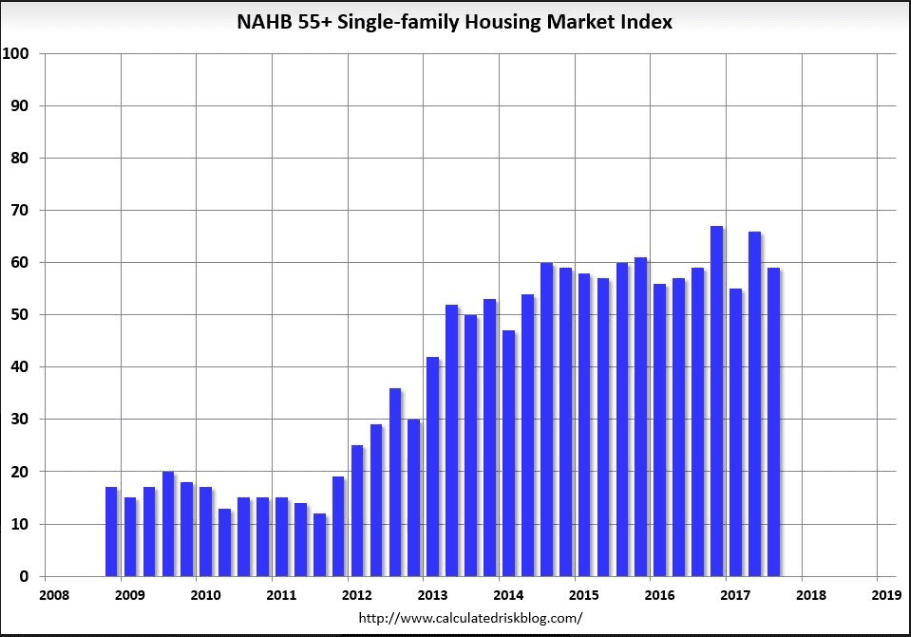
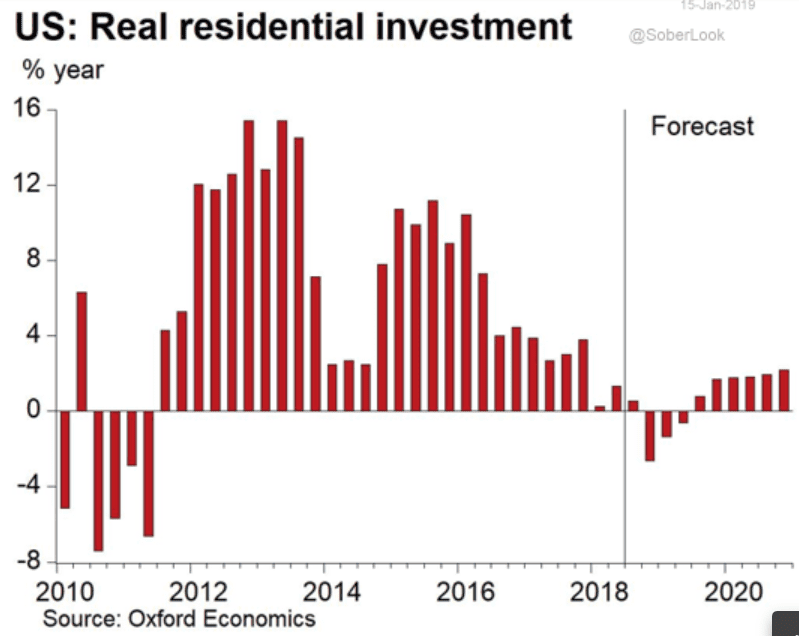
Nice mentions for Stephanie and a also bit for me here, as MMT is now on a roll:
December 2018 CBO Monthly Budget Review: Total Receipts Up by 1% And Spending Up 9% in the First Quarter of Fiscal Year 2019
The federal budget deficit was $317 billion for the first quarter of fiscal year 2019, CBO estimates, $92 billion more than the deficit recorded during the same period last year. Revenues were about the same and outlays were $93 billion (9 percent) higher than during the first quarter of 2018.
Asian airfreight traffic drops for first time in 2.5 years
(Nikkei0 Asia-Pacific carriers carried 2.3% less freight in November than they did a year earlier, according to data collected by the International Air Transport Association. This was the first monthly drop posted since March 2016. Global freight traffic was flat for the month. “Weaker manufacturing conditions for exporters and shorter supplier delivery times particularly in China impacted the demand,” the Transport Association said. In October, freight traffic had risen 2.1%. The Association of Asia-Pacific Airlines, which separately tracks data for 36 regional airlines, reported 0.1% growth in regional freight traffic for November.
Prospect of U.S. profit drop rises for investors
(Reuters) For 2019, analysts now see profits growing by 6.8 percent, down sharply from an Oct. 1 estimate of 10.2 percent earnings growth. The last profits recession occurred from July 2015 through June of 2016. S&P 500 tech earnings are expected to decline year-over-year for the first three quarters of 2019, based on Refinitiv’s data, and deliver growth of just 2.6 percent this year, the lowest of any sector. Since 1968, as far back as Refinitiv’s data goes, the S&P 500 has had 10 earnings recessions. Seven of the 10 profit recessions since 1968 have coincided with a formal economic recession.
Not particularly reliable but another data point:
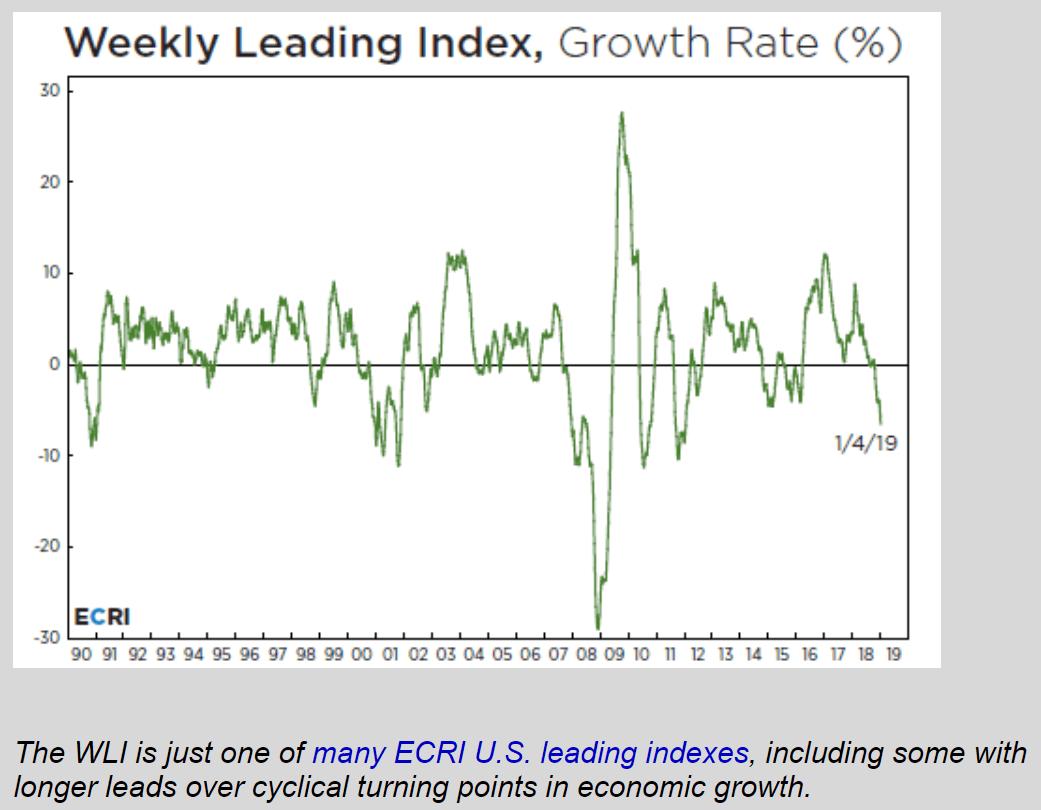
And this:

Remember, these buybacks per se act as a ‘reverse split’ does to increase nominal share prices for the benefit of management compensation that’s tied to nominal share price. A ‘scam’ when not specifically disclosed to shareholders?
U.S. buyback market support may wane in 2019
(Reuters) Through the first three quarters of the year companies bought $583.4 billion of their own stock according to S&P Dow Jones Indices data. $295 billion of foreign profits were repatriated in the first quarter of 2018. In the third quarter that was down to about $93 billion. About $190 billion of repatriated funds were used on buybacks in the first three quarters of 2018, JPMorgan says. S&P 500 companies bought roughly $4.5 trillion worth of their own shares, equal to about a third of the benchmark’s $15 trillion gain in value over that time, according to Wells Fargo.
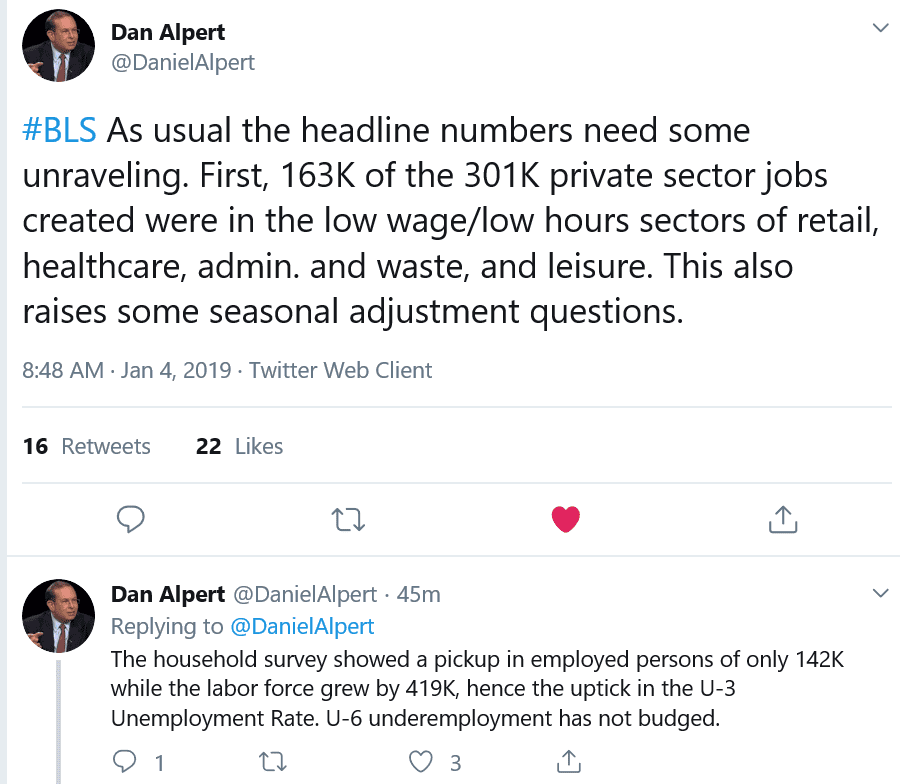
Agent Orange, the self proclaimed tariff man, taking the EU:
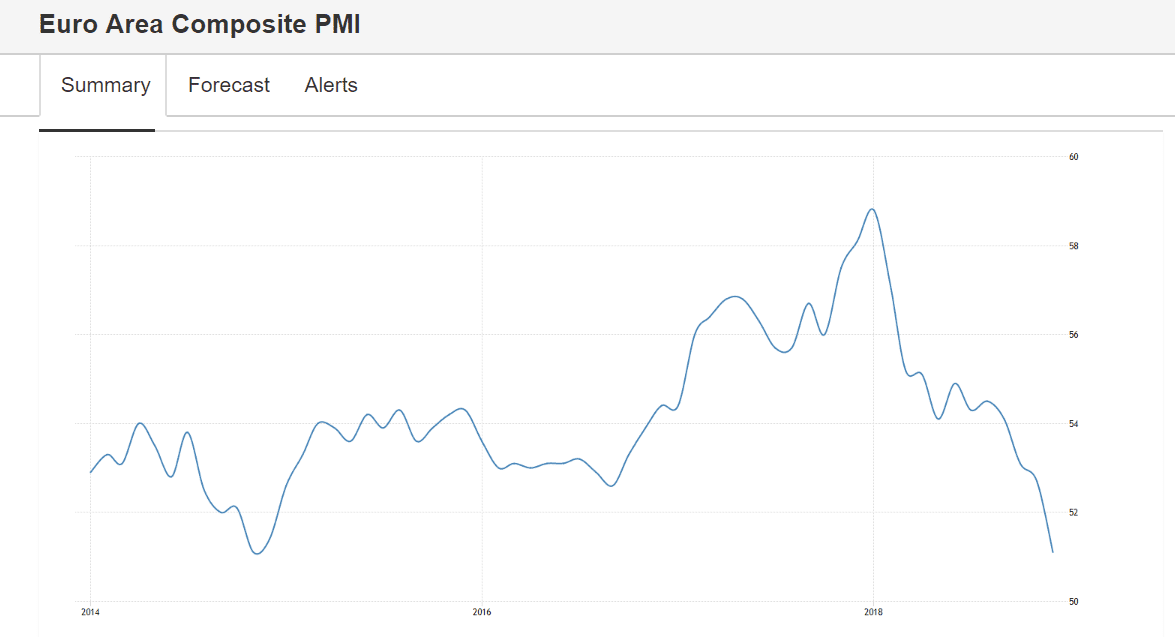
US decelerating:
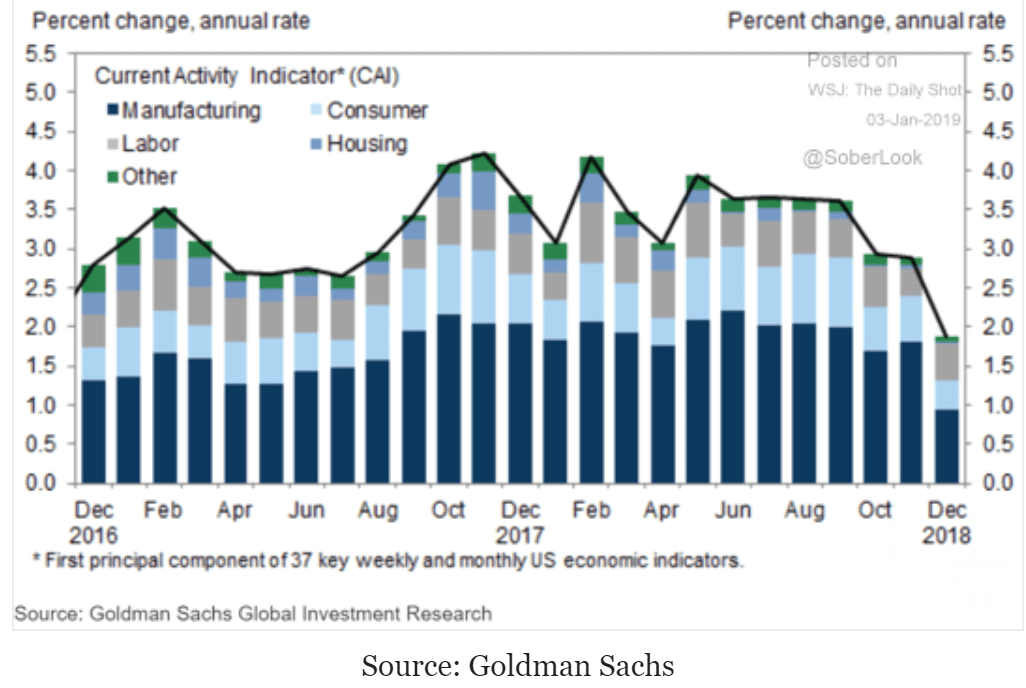
I would have expected Chile to be affected most by global warming…
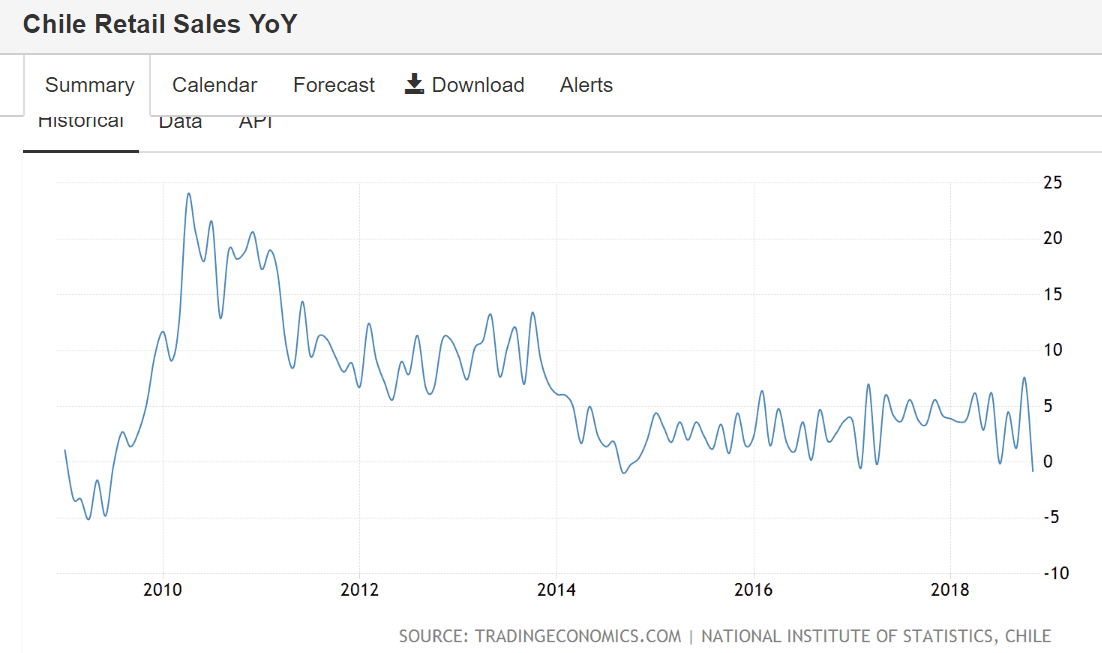
It’s becoming more clear to me that lending shifted from banks to other investment entities via the leveraged loan process, and the growth in that credit channel is what supported GDP growth as other channels faded. Most recently, however, leveraged loan growth has faded, and the weakening economic indicators tell me this time there hasn’t been any other forms of credit expansion stepping up:
